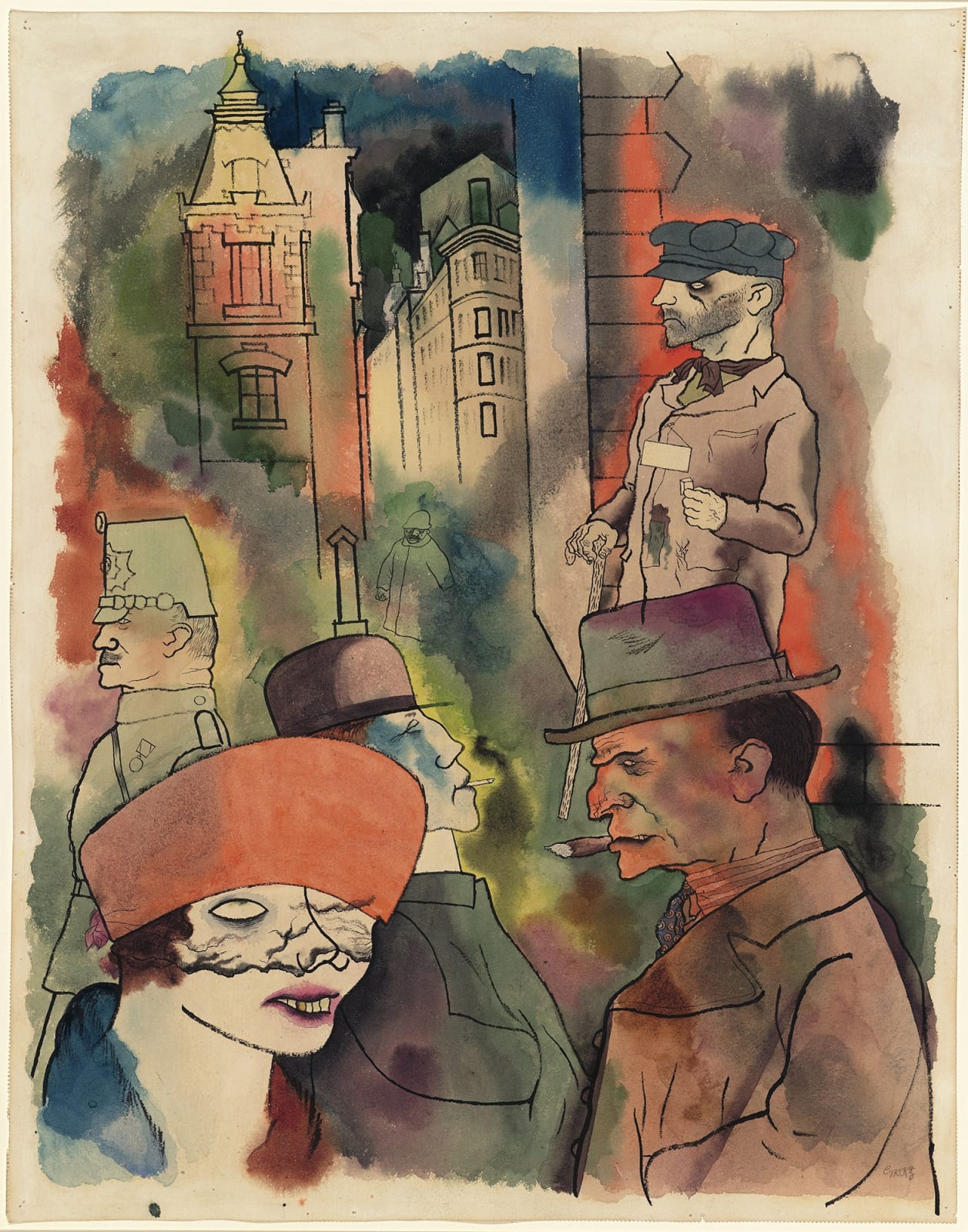George Grosz
The Gloaming (Ecce Homo), 1922
Watercolour, reed pen, pen and ink on paper
51.5 x 40.5cm
This watercolour and catalogue 34 in this exhibition, with the same title though of different years and styles, are closely related. The previous work was reproduced as drawing six in...
This watercolour and catalogue 34 in this exhibition, with the same title though of different years and styles, are closely related. The previous work was reproduced as drawing six in the portfolio Im Schatten (In the Shadows), published in 1921 (see cat.30), some eighteen months after it was made and two years before the watercolour. In terms of its theme it is the same as this 1922 watercolour Dämmerung (The Gloaming), which was reproduced in colour in the publication Ecce Homo as plate sixteen. The drawing shows all the main characters featured in the watercolour, with the addition of a man's portrait in the centre of the image.
In terms of style, however, the drawing differs greatly from the watercolour. The former is in Grosz's fractured, superimposed, razor-sharp style - the figures' heads appear connected as a polymorphous mass - while the watercolour is a realistic depiction of the figures separate from each other in the urban landscape, and can be called a work of Neue Sachlichkeit New Objectivity). The houses in the drawing are collapsing in an explosive manner, while the architecture of the watercolour is intact.
This watercolour, with its fresh colours and striking black strokes, is a remarkable technical achievement. Grosz started by applying the watercolours wet on wet, followed by lines drawn with pens and reed pens of varying strengths. He then alternated between these techniques. The lines are drawn both above and beneath the watercolours and develop freely on the paper, creating great spatial depth and brilliance.
In terms of style, however, the drawing differs greatly from the watercolour. The former is in Grosz's fractured, superimposed, razor-sharp style - the figures' heads appear connected as a polymorphous mass - while the watercolour is a realistic depiction of the figures separate from each other in the urban landscape, and can be called a work of Neue Sachlichkeit New Objectivity). The houses in the drawing are collapsing in an explosive manner, while the architecture of the watercolour is intact.
This watercolour, with its fresh colours and striking black strokes, is a remarkable technical achievement. Grosz started by applying the watercolours wet on wet, followed by lines drawn with pens and reed pens of varying strengths. He then alternated between these techniques. The lines are drawn both above and beneath the watercolours and develop freely on the paper, creating great spatial depth and brilliance.

